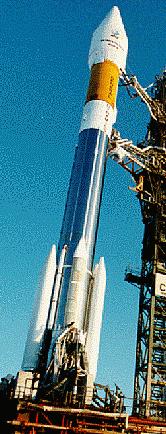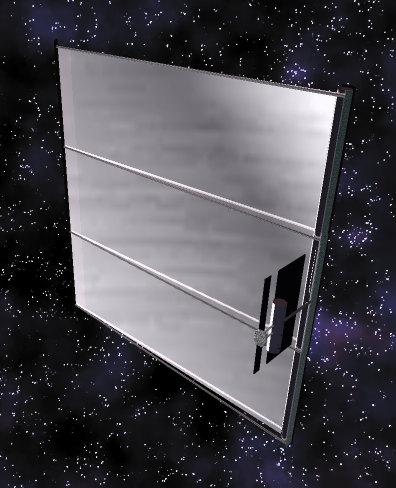
Although some clever engineering solutions are proposed, no advanced technology is assumed in the lowest performance external occulter designs of the occulting vehicle.
The original intent of one team investigating the technique had been to show that such external occulters could be built yesterday. It then migrated toward design of a system that could perform aspects of the TPF program. There are many clever ideas for searching for extraterrestrial planets, such as the Terrestrial Planet Finder, and the Space Interferrometry Mission, which would add greatly to our knowledge of the environments around other stars. There have been many proposed occulter missions such as BOSS and New Worlds.
A spectrum of different occulter mission classes of have been suggested, given that the occulting spacecraft has a scalable architecture.

The smallest scientifically interesting mission that we believe
could be perform might involve an occulting vehicle under 1.4
metric tonnes with a screen some 5-8 metres across. We envision CORVET ( 01-10-23) as launchable from an Atlas IIAS
(shown at right) with a small 1-metre diameter space telescope which could
be placed into an orbit about the sun far enough away from Earth's gravity
that science could be performed. CORVET would out-perform
any existing classic coronagraph, but it can directly observe
only the easiest of the currently known exoplanets.
01-10-23) as launchable from an Atlas IIAS
(shown at right) with a small 1-metre diameter space telescope which could
be placed into an orbit about the sun far enough away from Earth's gravity
that science could be performed. CORVET would out-perform
any existing classic coronagraph, but it can directly observe
only the easiest of the currently known exoplanets.
CORVET is only a small occulter mission, and even though it could do interesting science, it is really a technology demonstrator. We would expect a more advanced occulter mission using a higher performance screen to show that the technique actually works well enough to do the most exciting circumstellar science and investigation: searching for terrestrial analogues around the nearest stars.
CORVET uses the small space telescope to look for large Jovian-type planets around the nearest stars in conjunction with the occulter. From project start to launch, we estimate that less than 4 years are necessary until the first images are returned from CORVET.
Approximately 80% of the telescope time would not be used by the occulter mission. Because of the slow task of moving the occulter around at the tiny accelerations possible with the ion engines, most of the telescope time would be available for use by other programs or for use with the proposed on-board coronograph.
To ensure the highest optical quality of the images, and allow the best science to be returned, CORVET might use an off-axis primary mirror with no occlusions by a secondary support in the optical path. This removes some diffraction spikes which complicate image analysis due to the light scattered in the field through to the focal plane.
 Larger occulter missions could be launched, including ones for
2-metre space telescopes, and even one for NGST.
Since 1999, a scheme for packaging a larger 45-metre screen into
a launcher has been conceived (shown at right, deployed in the
observing configuration) More advanced higher-performance occulters,
capable of suppressing orders of magnitude more starlight have been
proposed in recent years.
Larger occulter missions could be launched, including ones for
2-metre space telescopes, and even one for NGST.
Since 1999, a scheme for packaging a larger 45-metre screen into
a launcher has been conceived (shown at right, deployed in the
observing configuration) More advanced higher-performance occulters,
capable of suppressing orders of magnitude more starlight have been
proposed in recent years.